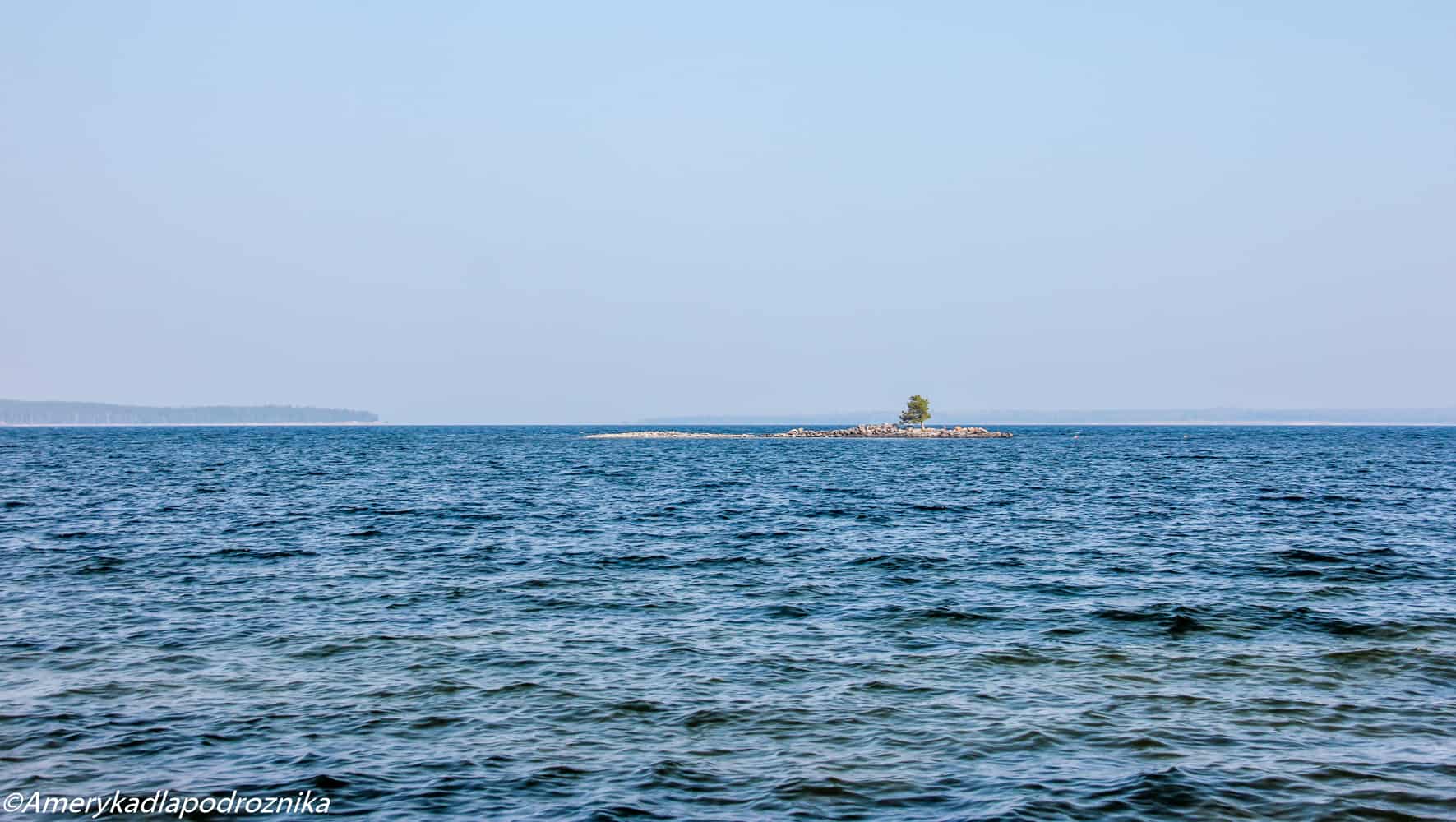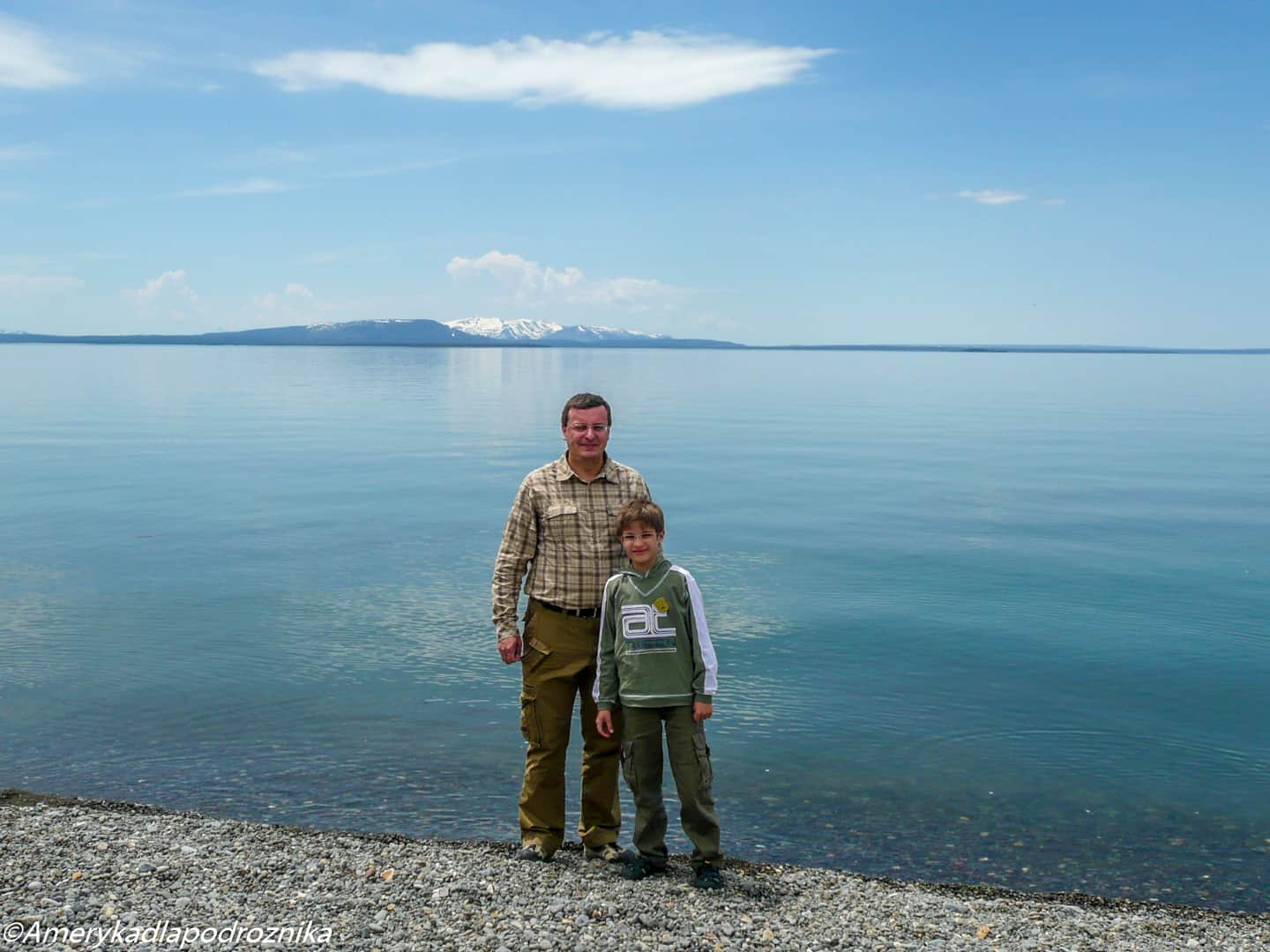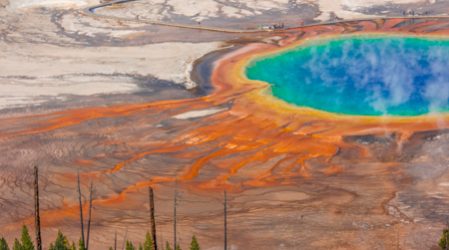Yellowstone Lake
Now it is time to visit the Yellowstone Lake. This is a true water giant, having more than 350 km2 of area and 111 miles (180km) of shoreline. There is an interesting geothermal area located on the southern bank. It is going to be our next stop
The drive along the lake alone is an amazing aesthetic experience. You will surely stop every couple minutes to take pictures. Right behind the Bay Bridge you should turn left onto Gull Point Drive. This road is 2 miles long and will take you closer to the lake and later back to the Grand Loop Rd. The pavement runs right next to the lake banks and in some parts through the lake on a causeway. The road will lead you to the Gull Point, a scenic peninsula with a stony shore and a spit covered with trees. This is an excellent spot to eat your lunch with an amazing view of the lake, taking advantage of picnic tables located there. You will have to take a short walk to get to the picnic area from the parking.
From this same fork, from which we turned left onto Gull Point Drive, you can turn right towards the trail to the Natural Bridge. The trail is around 2.3 miles (3,5km) long both ways. It will take you to a large stone arch, but in my opinion it is not worth our time, it is really nothing exceptional.


West Thumb
Now we will be reaching the western bank of the lake, and the West Thumb Geyser Basin. This geothermal area is exceptionally interesting, because it is located right next to the lake, and some of the geysers even peak out from below the water surface. You will see some interesting small lakes, first of them being the Abyss, which is said to be the deepest geothermal lake in Yellowstone – it is 16 meters deep.

Black Pool is located next to the Abyss and it is not really black, but rather sapphire-blue. But there was a time when it was dark brown as the bacteria living in it dyed it to this color. A sudden eruption in 1991 killed off all of the bacteria leaving the lake blue.
 Black Pool
Black Pool
You should also visit the Fishing Cone, a geyser right at the lake shore, and sometimes when the water level rises, inside the lake. Fishing Cone looks like a flying saucer floating on the water. The oldest trappers already acknowledged its amazing features, as they claimed that it is a perfect place to catch fish and boil them right away in the geyser, as its temperature exceeds boiling.

At the end of West Thumb my favorite little lakes are located – Seismograph and Bluebell – one blue, the other as colorful as a rainbow.

Naturally you will find many other interesting lakes and geysers here, but the ones listed above are mandatory in your sightseeing schedule. A walk through West Thumb is about 1 mile (1,6 km) and will take you around 40 minutes.

Map of West Thumb:

10 miles behind the West Thumb the Isa Lake is located. This is where the American Continental divide runs. On one side of the divide, the water flows into the Gulf of Mexico, and on the other towards the Pacific Ocean. It is believed that Isa Lake is the only lake with water flowing into both sides of the Divide. Water from the eastern side flows first into the Lewis River, and later into the Pacific, while water from the western side flows into the Firehole River only to reach the Atlantic Ocean later.


Lone Star Geyser
We are now beginning our way back to West Yellowstone. An interesting option for an exciting end of the day is the Lone Star Geyser. This is a geyser with one of the most beautiful eruptions in the entire park. What is more, you can enjoy it in relative solitude, as it rarely gets visitors. It is an interesting experience, different from the Old Faithful. The trail to the Lone Star is 2.8 miles (4 km) one way, but you will beat it very fast, as the entire trail is paved and we managed to reach it in under an hour. You should leave your car in a pull out next to Kepler Cascade.
There is one problem with this geyser – it erupts every 3 hours and you need to plan your time carefully if you really dn’t want to miss it. The park recommends to visit the Old Faithful Visitor Center to acquire estimated eruption times, but anyone, who has ever tried to get some information in a visitor center should know, that it is no that easy. Being naive we decided to give the visitor center a try, but as usual, nobody knew anything. We turned back disappointed, but luckily some gentleman ran up to us and gave us an estimated time that he had overheard. Recently a nice new tradition had been born. Some of those who witnessed the last eruption write the time in sand at the parking lot. But if you do not find such information written in sand you will have to go to the Visitor Center.
The eruption of the Lone Star is really spectacular, the water shoots 45 feet (14 m) up. What is important to note is that the geyser has two eruptions, one “decoy” eruption, and the “true” eruption. The decoy one is a lot smaller, but those unaware can already start going back after it had ended, thinking that that was it. But after a couple minutes the real show begins.

After such a successful day it is time to go and rest, tomorrow we have more sightseeing ahead of us and I will share a plan for it in the next post. 😊
You can find the second and third day here:


